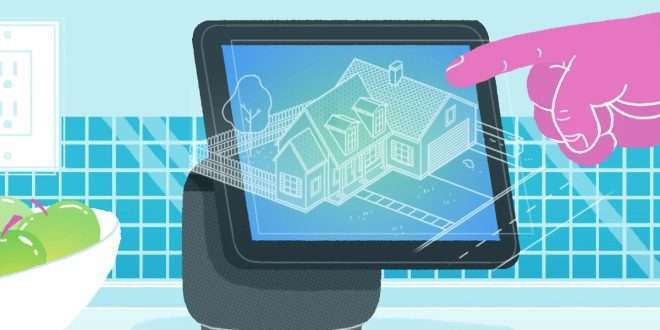Welcome to the ultimate guide on building your very own AI-powered smart home! In this comprehensive blog, we will take you through the exciting journey of integrating cutting-edge web technologies with AI to create a futuristic and intelligent living space. From the basics of web technology to advanced AI applications, we’ve got you covered. Let’s dive right in and embark on this extraordinary adventure!
Understanding Web Technology and Its Role in Smart Homes
Web technology forms the backbone of any smart home, enabling seamless communication between various devices and systems. At the core, it comprises a set of tools and resources that facilitate web development and connectivity. From IoT (Internet of Things) devices to cloud-based solutions, web technologies play a pivotal role in creating a connected and automated home environment.
To create a truly integrated smart home, familiarize yourself with key web technologies like:
IoT Devices:
Explore a wide range of IoT devices, such as smart thermostats, lighting systems, security cameras, and voice assistants, that can be interconnected for automation and control.
Web Hosting and Cloud Services:
Understand the importance of reliable web hosting and cloud services, which provide storage and computing power for your smart home applications.
The Intersection of AI and Smart Homes
As we move into the era of AI-driven innovation, the integration of Artificial Intelligence with smart homes opens up a world of possibilities. AI empowers your home to learn, adapt, and make decisions based on data analysis and user behavior.
Key aspects of AI in smart homes include:
Machine Learning:
Discover how machine learning algorithms can analyze data from sensors and devices to optimize energy usage, enhance security, and personalize user experiences.
Natural Language Processing (NLP):
Explore the magic of NLP, allowing you to communicate with your smart home using voice commands and conversational interactions.
Creating Your Smart Home Infrastructure
Before you embark on building your AI-powered smart home, it’s essential to establish a solid infrastructure to support its functionalities. Consider the following steps:
Assess Your Needs:
Identify your priorities and lifestyle requirements to determine the right mix of devices and AI applications for your smart home.
Network Setup:
Ensure a robust Wi-Fi network and evaluate whether you need a mesh network to avoid connectivity issues in large homes.
Hub Selection:
Choose a central hub that acts as the brain of your smart home, coordinating all connected devices and processing AI algorithms.
Embracing Voice Control for a Hands-Free Experience
One of the most exciting advancements in AI-powered smart homes is voice control. Embracing this technology allows you to interact with your devices naturally and effortlessly. Leading voice assistants like Amazon Alexa and Google Assistant can be seamlessly integrated into your smart home ecosystem.
To optimize voice control in your smart home, follow these tips:
Device Compatibility:
Ensure your smart devices are compatible with your chosen voice assistant to enable seamless integration.
Create Routines:
Set up custom routines to trigger multiple actions with a single voice command, such as turning off lights and locking doors before bedtime.
Enhancing Security with AI-Powered Solutions
Security is paramount in any smart home environment. With AI, you can implement advanced security measures to safeguard your property and loved ones.
Some crucial AI-driven security features include:
Facial Recognition:
Deploy facial recognition technology to identify authorized individuals and grant them access to your home.
Smart Cameras and Alarms:
Install smart cameras and alarms that can distinguish between regular activities and potential threats, reducing false alarms.
Personalizing Your Smart Home Experience
AI excels at understanding user preferences and providing personalized experiences. Tailor your smart home to your unique lifestyle and preferences with these tips:
User Profiles:
Create individual user profiles for each family member to offer personalized settings and recommendations.
Learning Algorithms:
Allow your smart home to learn from your habits and patterns to automate tasks and anticipate your needs.
The Role of Cloud Services in AI-Powered Smart Homes
Cloud services are an integral part of AI-powered smart homes, enabling seamless data storage, processing, and access from anywhere.
Key benefits of cloud services in smart homes include:
Remote Access:
Access your smart home devices and data remotely using cloud-based platforms.
Scalability:
Scale your smart home infrastructure effortlessly by leveraging cloud resources as needed.
Future Prospects and Trends in AI and Smart Homes
The world of AI-powered smart homes is ever-evolving. Stay ahead of the curve by keeping an eye on the following future prospects and trends:
Edge AI:
Expect AI processing to move closer to the edge devices, reducing latency and enhancing real-time response.
AIoT Integration:
The integration of AI with IoT will lead to more advanced and seamless smart home experiences.
Final Words
Congratulations! You are now equipped with the knowledge to build your very own AI-powered smart home. Embrace the wonders of web technology and AI, and witness your home transform into an intelligent oasis. With the power of voice control, enhanced security, and personalized experiences, the future of smart living is now at your fingertips. Start your journey today, and welcome the future of smart living!
Commonly Asked Questions
Q1. What is the essential web technology required for building a smart home?
The essential web technology required for building a smart home includes IoT devices for automation and control, as well as reliable web hosting and cloud services for data storage and processing.
Q2. How does AI enhance the smart home experience?
AI enhances the smart home experience by enabling machine learning for optimized energy usage and personalization, as well as natural language processing for intuitive voice control.
Q3. Can I use different voice assistants for my smart home devices?
Yes, you can use different voice assistants like Amazon Alexa and Google Assistant for your smart home devices, depending on their compatibility.
Q4. How does AI improve smart home security?
AI improves smart home security through features like facial recognition, which identifies authorized individuals, and smart cameras that can distinguish between regular activities and potential threats.
Q5. What is the future of AI and smart homes?
The future of AI and smart homes holds exciting prospects, including AI processing moving closer to edge devices and the seamless integration of AI with IoT for more advanced experiences.
 webfily
webfily



